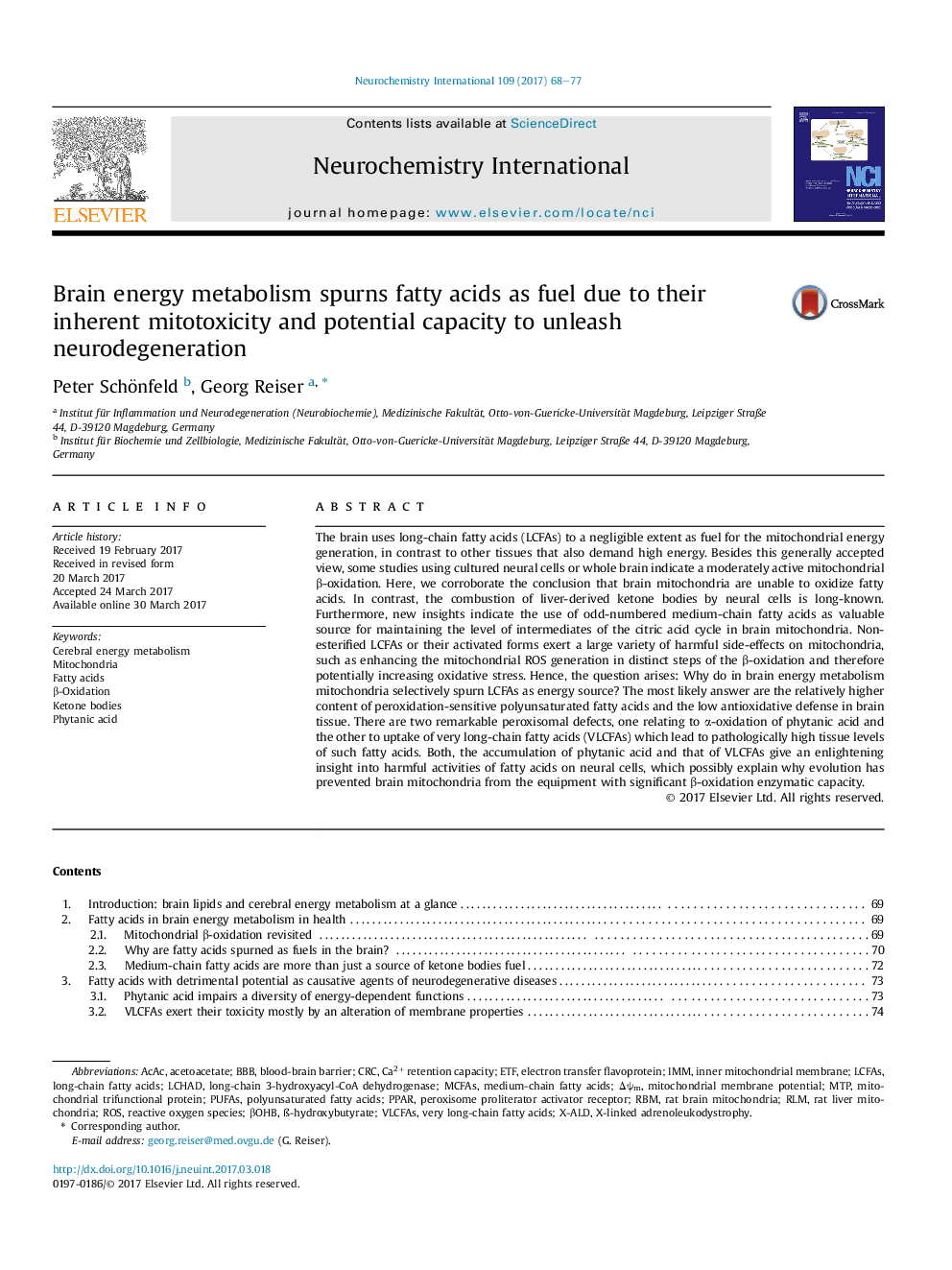| Article ID | Journal | Published Year | Pages | File Type |
|---|---|---|---|---|
| 5534670 | Neurochemistry International | 2017 | 10 Pages |
â¢Cerebral mitochondria use fatty acids to a negligible extent for energy generation.â¢High fatty acid levels at defective peroxisomes uncover fatty acids' mitotoxicity.â¢Fatty acid burning in non-cerebral mitochondria is linked to high ROS generation.â¢Brain dislikes fatty acids as fuel due to its high peroxidation sensitivity.â¢Refsum disease and X-linked adrenoleukodystrophy are due to peroxisomal defects.
The brain uses long-chain fatty acids (LCFAs) to a negligible extent as fuel for the mitochondrial energy generation, in contrast to other tissues that also demand high energy. Besides this generally accepted view, some studies using cultured neural cells or whole brain indicate a moderately active mitochondrial β-oxidation. Here, we corroborate the conclusion that brain mitochondria are unable to oxidize fatty acids. In contrast, the combustion of liver-derived ketone bodies by neural cells is long-known. Furthermore, new insights indicate the use of odd-numbered medium-chain fatty acids as valuable source for maintaining the level of intermediates of the citric acid cycle in brain mitochondria. Non-esterified LCFAs or their activated forms exert a large variety of harmful side-effects on mitochondria, such as enhancing the mitochondrial ROS generation in distinct steps of the β-oxidation and therefore potentially increasing oxidative stress. Hence, the question arises: Why do in brain energy metabolism mitochondria selectively spurn LCFAs as energy source? The most likely answer are the relatively higher content of peroxidation-sensitive polyunsaturated fatty acids and the low antioxidative defense in brain tissue. There are two remarkable peroxisomal defects, one relating to α-oxidation of phytanic acid and the other to uptake of very long-chain fatty acids (VLCFAs) which lead to pathologically high tissue levels of such fatty acids. Both, the accumulation of phytanic acid and that of VLCFAs give an enlightening insight into harmful activities of fatty acids on neural cells, which possibly explain why evolution has prevented brain mitochondria from the equipment with significant β-oxidation enzymatic capacity.
